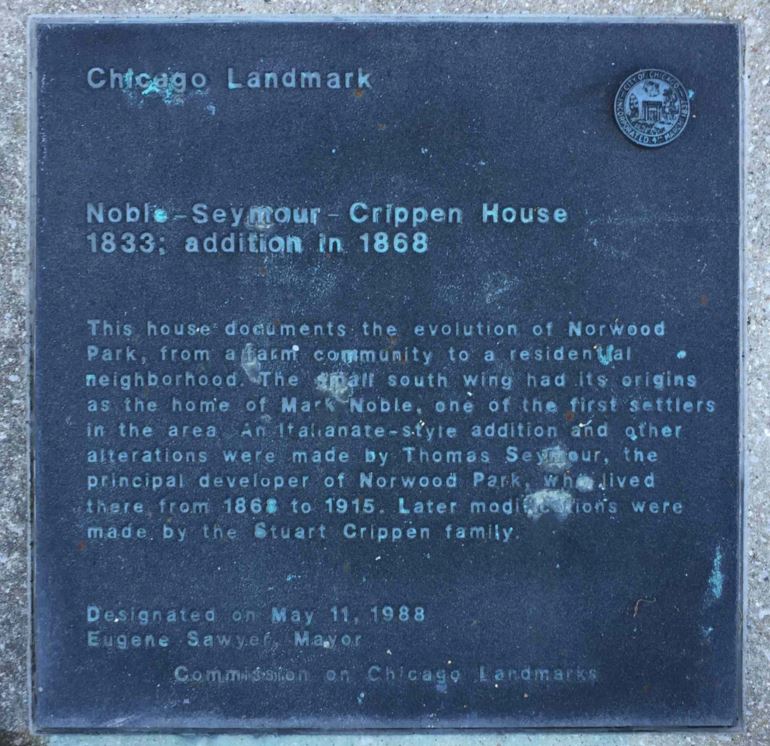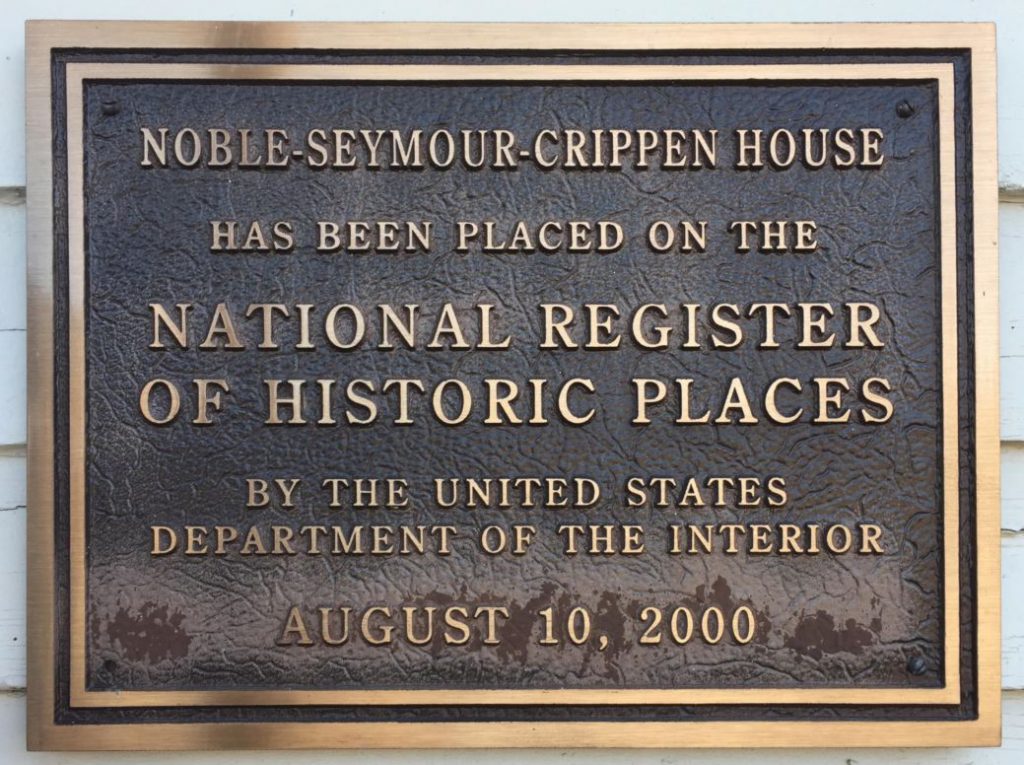Norwood Park remains a quaint, picturesque community and lives up to the dreams of those early residents who considered it an “ideal suburb.” Norwood Park’s picturesque land plan and its architecturally and historically significant buildings have been recognized by both the City of Chicago and the National Register of Historic Places.

City of Chicago Landmark designations:
• Henry W. Rincker House, 6366 N Milwaukee Avenue, August 10, 1979 (“accidentally” demolished on August 20, 1980)
• Noble-Seymour-Crippen House, 5622-5624 N Newark Avenue, May 11, 1988
• John Wingert House, 6231 N Canfield Avenue, July 31, 1990
In 1983, the Commission on Chicago Landmarks (CCL) initiated a city-wide review of all buildings, looking for those that were at least 40 years old and of architectural or historic significance. Additional criteria included the extent of exterior building materials and features, architects, or notable people. The 41st Ward, which includes Norwood Park, was surveyed in 1985-1986. In Norwood Park, a significant number of individual properties and a potential landmark district containing a portion of the original Norwood Park subdivision were identified. The proposed district was so large that the CCL did not pursue its creation due to the enormity of the costs of legally required documentation, notification, and mailing. A number of individual properties have been designated as Chicago Landmarks.
National Register of Historic Places listings:
• The Noble-Seymour-Crippen House, August 10, 2000
• Chicago and North Western Railroad Depot, 6088 N Northwest Highway, February 9, 2001
• Norwood Park Historic District, November 21, 2002
• Passionist Fathers Monastery, March 6, 2013

National Register of Historic Places
In 2002, upon prompting by the Norwood Park Historical Society and local residents, Alderman Brian Doherty, State Representative Michael McAuliffe, and Cook County Commissioner Peter Silvestri initiated a review of the historic district that had been proposed by the Commission on Chicago Landmarks in 1986. Recognizing the significance of Norwood Park, they mobilized their staffs and architecture students from local universities to complete the documentation required for a formal nomination to the National Park Service of the US Department of the Interior for listing on the National Register of Historic Places (NRHP). The Norwood Park Historic District, essentially the same geographic area as originally proposed by the CCL, was listed on the NRHP on November 21, 2002.
The NRHP listing recognizes the Norwood Park Historic District for its concentration of high quality historic architectural structures including late 1800s Victorians, American Four-Squares, turn-of-the-20th century Tudors, Colonial Revivals, Chicago-style Bungalows, Cape Cods, post-World War II ranch houses, as well as numerous documented Sears, Roebuck and Co. catalog houses from the early 1900s. Also recognized as significant is the pattern of land development, innovative for 1868-1869, when this neighborhood was originally platted from farmland by the Norwood Land and Building Association. The subdivision was designed to be a park-like setting, with large single-family lots on wide curvilinear streets encircling large expanses of public green space.
The NRHP listing does not impose any construction restrictions but it does create financial incentives for those property owners who undertake certified restorations. Maintaining the historic character of the district is key to retaining the listing on the NRHP. Many historic homes in Norwood Park have been demolished or radically altered. Further demolitions and historically insensitive alterations could jeopardize National Register of Historic Places status, including valuable financial incentives.
Despite the architectural and historical significance of Norwood Park, only City of Chicago landmarks are protected. The listings on the National Register of Historic Places are honorary designations and provide no protection against demolition. Consequently, many significant buildings have been lost.
Norwood Park Special Character Overlay Districts #1 and #2
Norwood Park was designed with large lots. Developers, capitalizing on the spacious lots, divided them and built houses in side yards and even backyards. In the 1990s, the residents of Norwood Park sought to preserve the distinctive character of the neighborhood by seeking remedies to prevent this activity, typically regulated by zoning ordinances. Although the City of Chicago had a zoning ordinance, it did not have the tools to solve this problem. The creation of zoning overlay districts by the City was conceived as the answer.
Norwood Park Special Character Overlay Districts #1 and #2, approved in 1994, were the first two such districts created in Chicago. The special districts impose additional requirements over those already specified in the underlying zoning. In the case of Norwood Park, the additional requirements include, among other things, minimum lot area and street frontage. Please see the Chicago Zoning Ordinance for the details.

